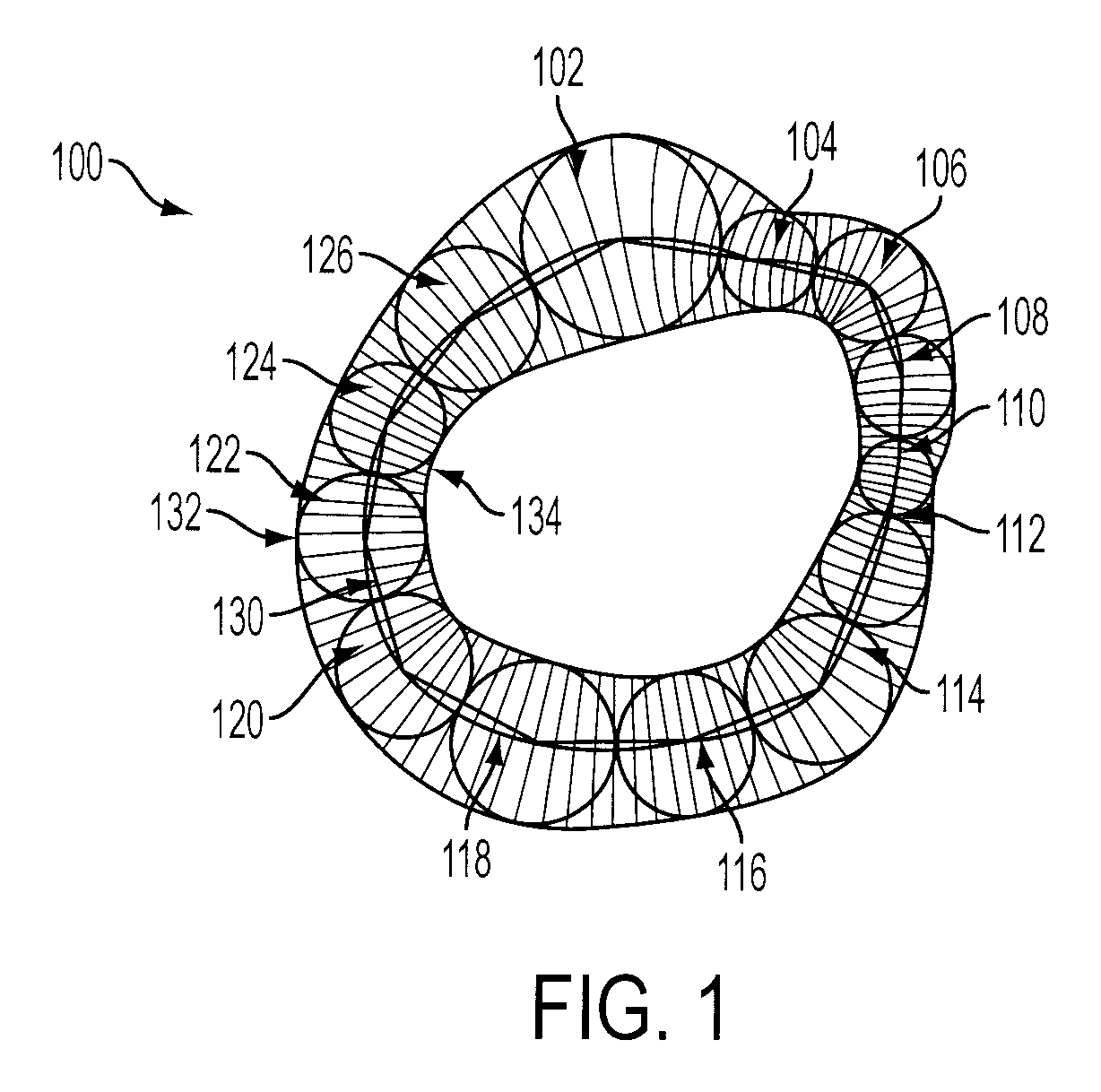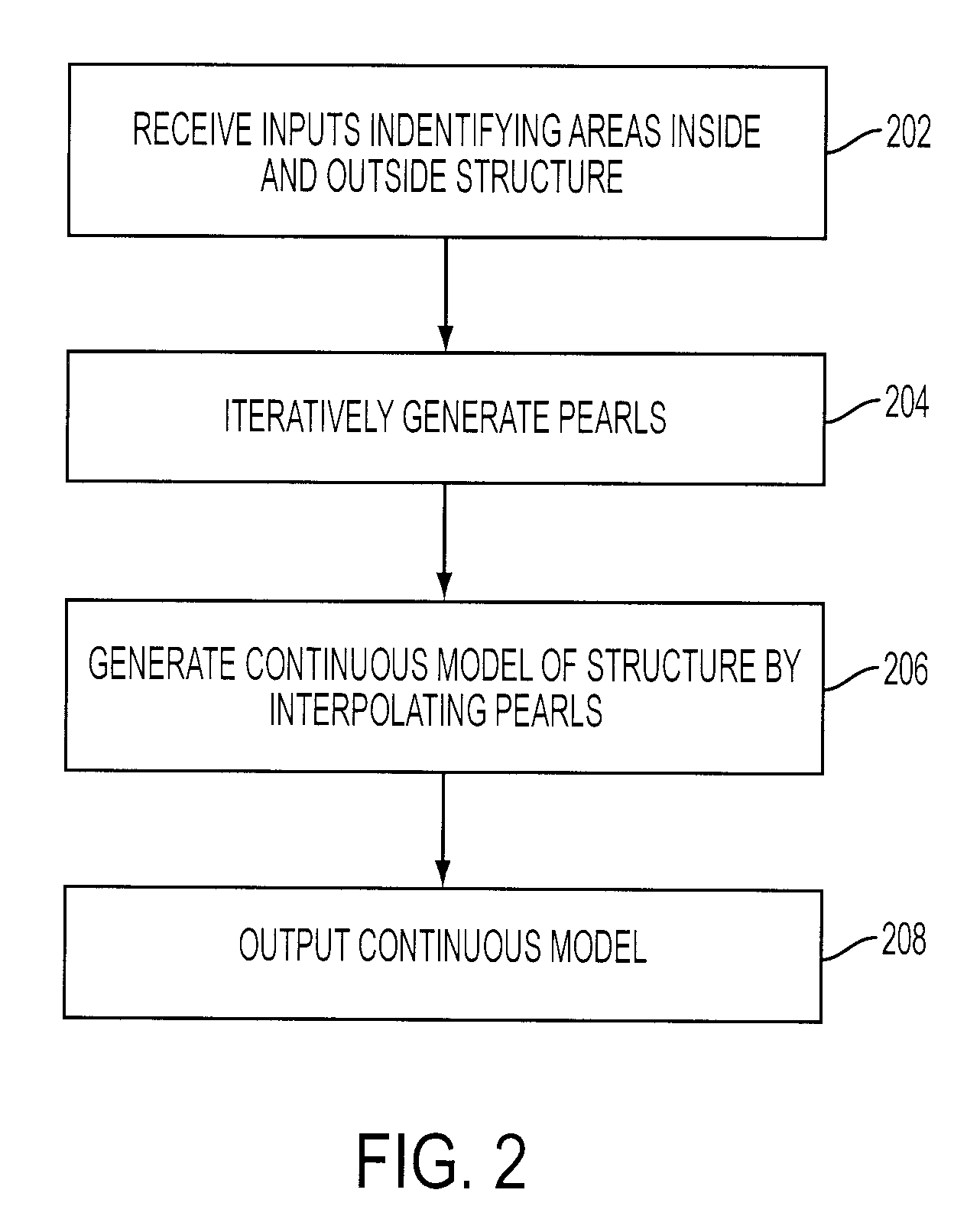Method and system for segmentation of tubular structures using pearl strings
a tubular structure and pearl string technology, applied in image analysis, image enhancement, instruments, etc., can solve the problems of stroke-like structure segmentation, manual techniques typically require too much tedious labor to be practical in clinical applications, and it is difficult for fully automatic segmentation methods to yield robust results
- Summary
- Abstract
- Description
- Claims
- Application Information
AI Technical Summary
Benefits of technology
Problems solved by technology
Method used
Image
Examples
Embodiment Construction
[0018]The present invention is directed to a method for segmenting tubular or stroke-like structures in 2D images. As used herein, the term “stroke” refers to variable width curves in 2-dimensional images. The terms tubular structure, stroke structure, and stoke-like structure are used herein interchangeably. Examples of such structures include, but are not limited to, blood vessels, bones, roads, rivers, electrical wirings, and brush-strokes.
[0019]Embodiments of the present invention are described herein to give a visual understanding of the segmentation method. A digital image is often composed of digital representations of one or more objects (or shapes). The digital representation of an object is often described herein in terms of identifying and manipulating the objects. Such manipulations are virtual manipulations accomplished in the memory or other circuitry / hardware of a computer system. Accordingly, is to be understood that embodiments of the present invention may be perfor...
PUM
 Login to View More
Login to View More Abstract
Description
Claims
Application Information
 Login to View More
Login to View More - R&D
- Intellectual Property
- Life Sciences
- Materials
- Tech Scout
- Unparalleled Data Quality
- Higher Quality Content
- 60% Fewer Hallucinations
Browse by: Latest US Patents, China's latest patents, Technical Efficacy Thesaurus, Application Domain, Technology Topic, Popular Technical Reports.
© 2025 PatSnap. All rights reserved.Legal|Privacy policy|Modern Slavery Act Transparency Statement|Sitemap|About US| Contact US: help@patsnap.com



